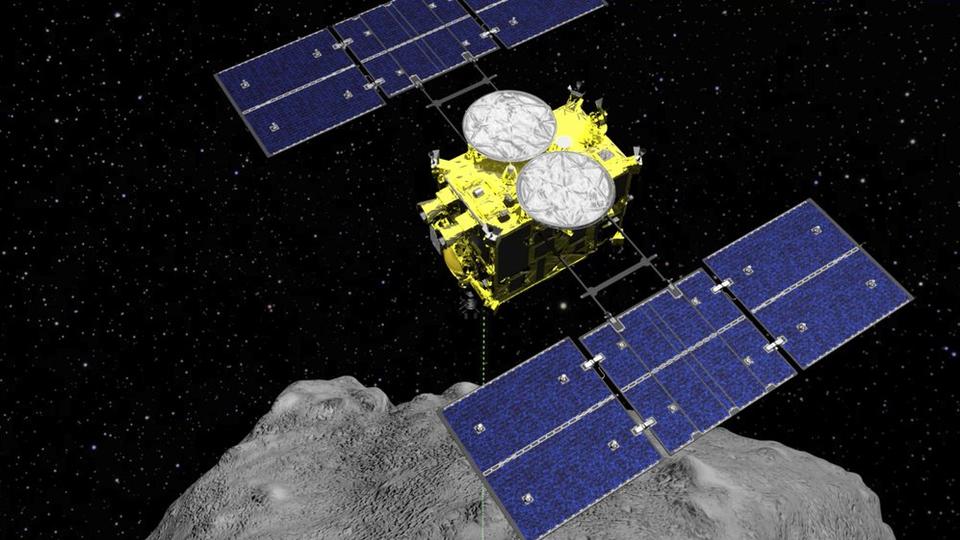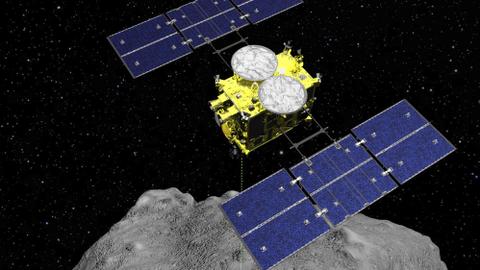Hayabusa2 spacecraft released a small capsule that has landed in a remote, sparsely populated area of Woomera, Australia, Japan's space agency says.

A small capsule carrying samples from a distant asteroid has landed in Australia, Japan's space agency said.
The capsule successfully detached by Japan's Hayabusa2 spacecraft from 220,000 kilometres away in a challenging operation required precision control, the Japan Aerospace Exploration Agency said on Saturday.
The capsule, just 40 centimetres in diameter, landed in a remote, sparsely populated area of Woomera, Australia.
The samples could provide clues to the origin of the solar system and life on our planet.
'We've successfully come this far'
Hayabusa2 left the asteroid Ryugu, about 300 million kilometeres away, a year ago.
After it released the capsule, it moved away from Earth to capture images of the capsule descending toward the planet as it set off on a new expedition to another distant asteroid.
About two hours later, JAXA said it had successfully rerouted Hayabusa2 for its new mission, as beaming staff exchanged fist and elbow touches at the agency's command center in Sagamihara, near Tokyo.
"We've successfully come this far, and when we fulfill our final mission to recover the capsule, it will be perfect," mission manager Makoto Yoshikawa said from the command center during a live streaming event.
World's first asteroid subsurface samples
Hayabusa2's return with the world's first asteroid subsurface samples comes weeks after NASA's OSIRIS-REx spacecraft made a successful touch-and-go grab of surface samples from asteroid Bennu.
China, meanwhile, announced this week that its lunar lander collected underground samples and sealed them within the spacecraft for their return to Earth, as space developing nations compete in their missions.
In the early hours of Sunday, the capsule, protected by a heat shield, will briefly turn into a fireball as it reenters the atmosphere 120 kilometers (75 miles) above Earth.
At about 10 kilometres aboveground, a parachute will open to slow its fall, and beacon signals will be transmitted to indicate its location.
JAXA staff have set up satellite dishes at several locations in the target area to receive the signals. They also will use a marine radar, drones, and helicopters to assist in the search and retrieval of the pan-shaped capsule.
What're scientists interested in?
Australian National University space rock expert Trevor Ireland, who is in Woomera for the arrival of the capsule, said he expected the Ryugu samples to be similar to the meteorite that fell in Australia near Murchison in Victoria state more than 50 years ago.
Scientists say they believe the samples, especially ones taken from under the asteroid’s surface, contain valuable data unaffected by space radiation and other environmental factors.
They are particularly interested in analysing organic materials in the samples.
Yoshikawa, the mission manager, said 0.1 gram of the dust would be enough to carry out all planned researches.

Japan's capsule returns to Earth with asteroid samples
Hayabusa2 spacecraft released a small capsule that has landed in a remote, sparsely populated area of Woomera, Australia, Japan's space agency says.


